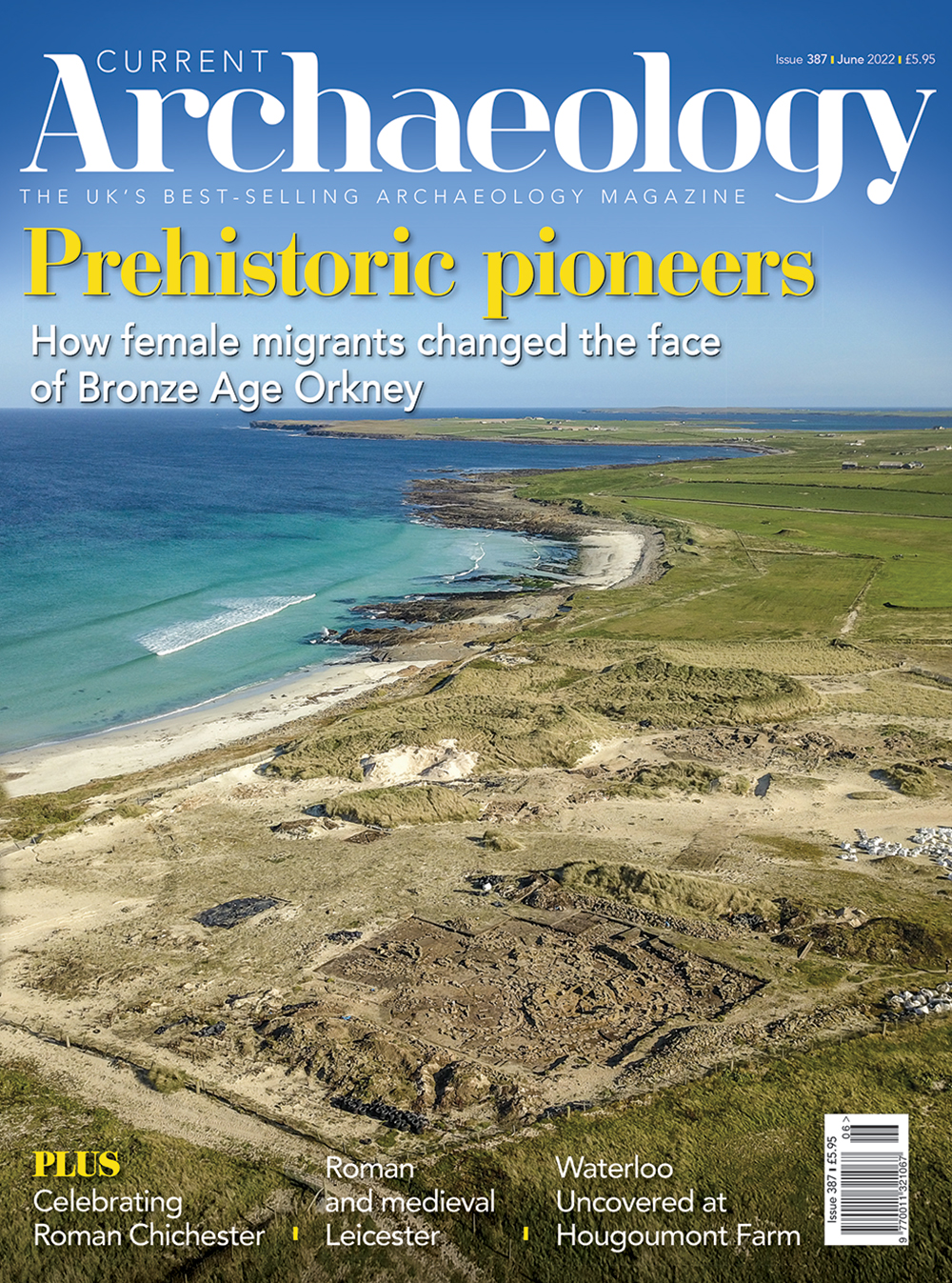Neolithic Orkney was a prehistoric powerhouse whose cultural influence spread across Britain and Ireland. What happened after these glory days, though? The archipelago has long been portrayed as a Bronze Age backwater, isolated from the dramatic changes that were taking place elsewhere in Britain – but now genetic analysis has revealed this was far from the case, as our cover story reports.
Iron Age Leicester also enjoyed far-reaching connections, importing goods from Gaul, Italy, and Iberia. A new monograph brings together half a century of excavations to trace cycles of growth and decline as the area moved into the Roman and medieval periods.
Roman Leicester has yielded no definitive evidence for a fort or prolonged military presence, but our third feature has a distinctly martial flavour. Waterloo Uncovered’s excavations at Hougoumont Farm have shed new light on a place that played a key role on the Belgian battlefield in 1815. This article represents a rare trip overseas for CA (since the launch of our international sister-magazine, Current World Archaeology, in 2003); if you would like to read more about archaeology abroad, do pick up a copy of CWA.
We return to the Roman period to examine the remains of Noviomagus Reginorum – today, Chichester. From Fishbourne Roman Palace to the recent discovery of high-status townhouses in a public park, the city has produced plenty of clues to this period of its past: a rich legacy that also inspired an annual festival.
Finally, we venture into the peatlands that cover parts of Britain and Ireland. Why are these landscapes so vital to archaeological understanding, how are they threatened by the current climate crisis – and what can be done to help?

